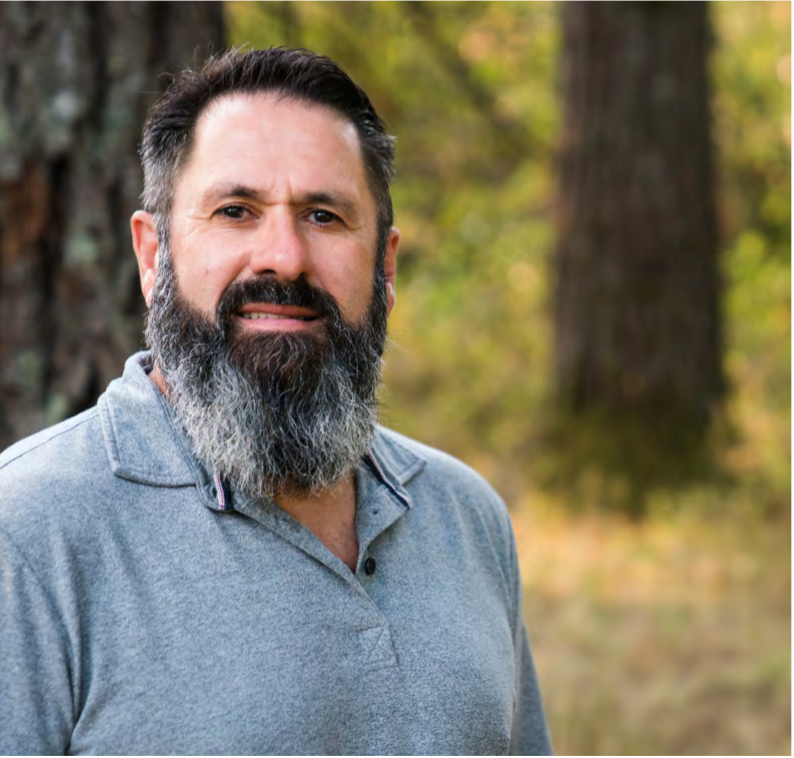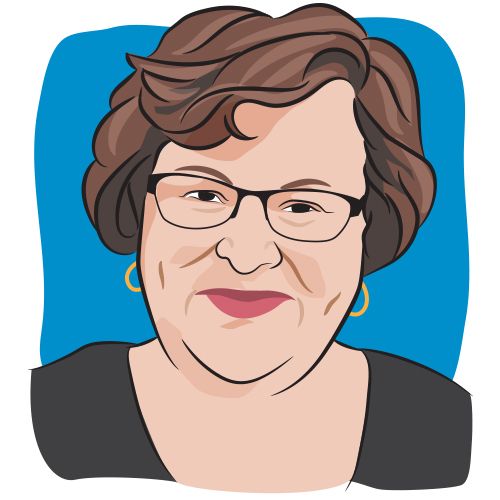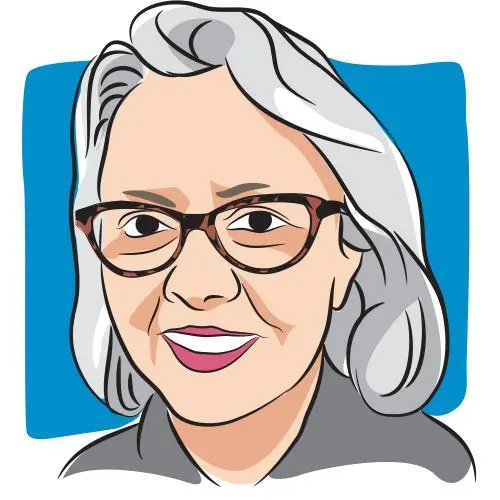News
Article
CURE
New Horizons for Diffuse Large B-Cell Lymphoma
Author(s):
Recent advancements in treatment options for patients with diffuse large B-cell lymphoma have been practice-changing.
Roy Bragadeste received a diagnosis of diffuse large B-cell lymphoma (DLBCL) in April 2019.
Photo credit: Neyssa Lee

He wasn’t expecting a fall during an ice storm to lead to a cancer diagnosis. But that’s what happened to Roy Bragadeste, now 55, an engineer at Microsoft.
Bragadeste, who immigrated from Portugal when he was 8 years old and now lives in Washington, went to an urgent care clinic and learned that he had broken three ribs. As a lifelong athlete, he says he “beat (his) body up pretty good” and was used to aches and pains. But this pain in his side and back was different.
“Three months later, the pain never subsided,” he says. “If anything, it kind of got worse.”
He went back to the clinic, where a doctor recommended that he get a CT scan, though Bragadeste couldn’t imagine why. Doctors told Bragadeste he had a mass on his urethra, which was impeding his kidney function and causing his kidney to swell.
He was diagnosed with diffuse large B-cell lymphoma, or DLBCL, in late April 2019. In May, he started chemotherapy.
Bragadeste experienced some unpleasant reactions to the chemotherapy, including serious fatigue.
“But I got through it,” he continues. “At the end, all of (the lymphoma) was knocked out, except one very small spot in the center of my body. So, we watched it for a bit.
“Unfortunately, it didn’t work,” Bragadeste says.
His cancer came back early in 2020. Bragadeste then received a painful bone marrow transplant in the hope that this second treatment would destroy the lymphoma.
After four or five months, he began to feel as though he’d recovered from the transplant, but scans showed that his cancer hadn’t responded.
On Feb. 2, 2021, his birthday, Bragadeste started CAR-T cell therapy, a technique that engineers the body’s own white blood cells to attack cancer.
Three months after that, his scans looked better, but there were still spots in his body that might indicate the presence of lymphoma.
A lung biopsy confirmed that he still had cancer.
At that point, Bragadeste says, he was ready to try anything. When the opportunity came to participate in a trial of a new drug, Bragadeste saw it as a chance not only to survive, but to help other people living with DLBCL.
He reflected on the many people who had participated in clinical trials that ultimately led to new treatments.
“Those people made sacrifices,” he said. “People sacrificed their lives, maybe because (researchers) put a little too much of this, or not enough of that. At that point, I said, ‘This is the time to give back.’ ”
Bragadeste entered a study of the immunotherapy drug Columvi (glofitamab-gxbm).
Eighteen months after participating in that clinical trial, Bragadeste is cancer-free.
For about two decades, a combination of chemotherapies known as R-CHOP — which consists of the drugs cyclophosphamide, doxorubicin hydrochloride, vincristine and prednisone along with the biological drug Rituxan (rituximab), an antibody that binds to a protein called CD20 expressed on lymphoid cells — was the standard of care for DLBCL.
Researchers spent years trying variations to better suit patients with limited success, but in the past few years, new methods have come to offer better, more effective options for people living with DLBCL.
“I would say the history of trying to improve on R-CHOP has been quite checkered,” says Dr. Jonathan W. Friedberg, director of the Wilmot Cancer Institute in Rochester, New York. “Until very recently, there has not been a positive phase 3 study that has overcome R-CHOP.”
Dr. Manali Kamdar, a clinical researcher in the field of blood cancers at the University of Colorado Anschutz Medical Campus in Aurora, describes the years 2022 and 2023 as “pivotal in terms of having more medications approved for patients with large-cell lymphoma.
“With R-CHOP, about 40% to 60% of patients will be cured,” Kamdar says. “However, the remainder will either initially respond to these treatments and relapse later or will not respond at all. ... At this point in time, just over the last several months, our practice in the clinic has changed. We no longer use R-CHOP for patients with high-risk, advanced-stage DLBCL.”
A New Option for Untreated DLBCL
Minister Edward L. Morgan, associate pastor of Kennerly Temple Church of God in Christ in St. Louis, was undergoing treatment for multiple myeloma when, in early 2021, he received a diagnosis of stage 4 DLBCL. A cancerous lymph node was obstructing his biliary tract, causing jaundice. Other disease characteristics made his case particularly high risk.
“I knew it was a very deadly disease,” he says from his home in Jennings, on the outskirts of the city. “I was concerned as to how my family would survive if I wasn’t around. Being a minister, I just prayed and asked God to give me the strength to go through this.”
Morgan, who has been preaching for more than 50 years, recalled the well- known Bible verse in the 23rd Psalm: “Yea, though I walk through the valley of the shadow of death, I will fear no evil, for thou art with me.”
He placed his trust in his faith and in his oncologist, Dr. Mark Fesler at St. Luke’s Hospital in Chesterfield, Missouri, who had recently read and heard lectures about a new treatment option, an antibody-drug conjugate called Polivy (polatuzumab vedotin-piiq).
Morgan and his doctor connected from the moment they met, and Morgan credits Fesler not only with his survival, but with having a real emotional investment in caring for his patients.
Treatment with Polivy and R-CHP (the same as R-CHOP but without vincristine) began in February. By August, treatment was over, and one year later, Morgan was looking forward to his 81st birthday, his body clear of lymphoma.
In April, the Food and Drug Administration (FDA) approved a regimen combining the antibody-drug conjugate Polivy and R-CHP for patients with newly diagnosed, higher-risk DLBCL.
As an antibody-drug conjugate, Polivy works by attaching to proteins on lymphoma cells called antigens.
When Polivy attaches to antigens, it allows the chemotherapy drug bound to the antibody to enter and to attack cancerous B cells more effectively.
“The antibody is a vehicle that carries chemotherapy drugs on it. The antibody allows the poison (chemotherapy) to be targeted directly to a cancer cell,” says Friedberg, who co-authored the POLARIX study upon which the FDA based its approval of Polivy in this setting. “And at least theoretically, the normal cells aren’t seeing the poison, because the antibody is only recognizing the antigens on the cancer cell.”
In the POLARIX trial, which weighed the effectiveness of the Polivy and R-CHP combination against R-CHOP, Friedberg and colleagues concluded that the Polivy treatment reduced patients’ risk for disease progression or death by 27% compared with the standard of care.
Furthermore, a slightly larger proportion of patients who were treated with Polivy and R-CHP achieved a benchmark called two-year event-free survival, meaning they did not experience disease progression or complications during that time frame.
Researchers reported that patients assigned to Polivy did not experience side effects at greater rates than those assigned to R-CHOP; people in the Polivy-combination group had a side effect rate of 57.7%, compared with 57.5% in the R-CHOP group. Similar proportions of people in both treatment groups experienced complete responses, meaning the number of patients whose disease completely disappeared was similar. Also, the overall survival, or total amount of total time that patients lived, was not significantly different.
However, patients taking Polivy spent more time living disease-free.
Friedberg explains this statistic by pointing out that the Polivy regimen lets people live longer without cancer, and that DLBCL is considered a curable cancer.
“So, when you improve progression- free survival in DLBCL at two years, we believe that’s an extremely strong surrogate for cure,” he says.
However, he points out that there are salvageability options for people who relapse. With these additional, more aggressive treatments, Friedberg says, “there’s still a chance at curing the disease.”
Second-line treatment options for relapsed disease (when the disease responds only partially or not at all to first-line therapies) include stem cell transplantation and CAR-T cell therapy.
Two new immunotherapies have been approved this year for use in situations where the transplantation or CAR-T therapy fails.
New Treatments for Relapsed or Refractory Disease
Epkinly (epcoritamab-bysp) and Columvi recently became available for patients whose disease has relapsed or not responded to two or more prior treatments.
In May, the FDA approved Epkinly for adults with relapsed or refractory DLBCL. One month later, the FDA approved Columvi for relapsed or refractory DLBCL in the third line and beyond.
Both drugs belong to a type of immunotherapy called bispecific antibodies, meaning they help activate the immune system by bonding to two different targets on the lymphoma cell at once, guiding white blood cells to lymphoma cells and helping them to attack the cancer.
Epkinly works by both bonding to the CD20 antigen, a common marker on lymphoma cells, and engaging CD3 T cells, which are a type of white blood cell that kill the cancerous lymphoma cells.
“The idea behind a bispecific T-cell engager is that it’s an antibody. This antibody has two prongs,” Kamdar says. “One prong sits on the CD20 cell, the B cell. And the other prong sits on the T cell, or the fighter cell, and redirects the fighter cell to kill the lymphoma cell.”
The FDA approved Epkinly, delivered through a subcutaneous injection, based on results from the EPCORE NHL-1 trial, an open-label, single-arm trial of 148 patients with relapsed or refractory DLBCL.
The main purpose of the study was to evaluate how many people experienced a partial or complete response to Epkinly.
Researchers reported an overall response rate (the percentage of patients with a partial or complete response to treatment) of 61%, while 38% of patients had a complete response. Researchers reported that patients responded to Epkinly for a median of 15.8 months.
“It has shown exceptional responses based on the two pivotal studies that led to FDA approval,” says Kamdar.
The June approval of Columvi, which is also a CD20-directed CD3 T-cell engager, was based on the NP30179 trial.
In that study, which was also an open-label, single-arm trial, 132 patients with lymphoma received the medication. Like the EPCORE NHL-1 trial, the participants in this study previously had at least two failed lines of therapy.
The objective response rate (the portion of patients who had a partial or complete response to treatment) in NP30179 was 56%, researchers reported, whereas 43% of patients experienced complete responses.
Researchers reported that patients responded to the drug for a median of 18.4 months, and 68.5% responded to Columvi for 9 months.
While Epkinly can be adminis- tered for indefinite periods of time, Columvi is currently given to patients for a fixed duration of 8.5 months. And whereas Epkinly is administered by injection, Columvi is delivered by IV drip.
Side Effects
All three new treatments come with side effects, many of which are mild, but some of which are serious.
Although side effects occurred at similar rates in both groups of the POLARIX trial, the Polivy treatment commonly comes with fatigue, peripheral neuropathy (nerve damage that occurs away from the spine or brain), constipation, diarrhea, nausea, mouth sores and hair loss.
Its more serious side effects are neutropenia and lymphopenia (low counts of two types of white blood cells).
Nearly 10% of people who took Polivy in the POLARIX trial had to reduce their dosage because of side effects, compared with 13% of those who received R-CHOP. Similar proportions of people in both groups of the study died from side effects: 3% of the Polivy group and 2.3% of the R-CHOP group.
Morgan experienced some mild gastrointestinal side effects, and neuropathy in his feet and hands as well as fatigue, while taking Polivy.
“I would be kind of weak, and I would just go home and go to bed,” he says.
He opted to receive the chemotherapy portion of his therapy through his arm, rather than through a port in the neck or chest, and developed a necrotic ulcer that required treatment.
Still, Morgan was able to complete treatment without needing to be hospitalized. He continued to preach and teach Sunday school throughout his therapy.
Columvi and Epkinly have side effects similar to those of other immunotherapies.
The most notable of these is cytokine release syndrome, a potentially deadly but manageable condition that can occur when the body’s immune system responds aggressively to infection, or, in this case, cancer cells.
Other common side effects for both drugs include musculoskeletal pain, fatigue and reactions at the injection site.
Epkinly is also associated with fever, abdominal pain, diarrhea and nausea.
The drug comes with a special warning for both cytokine release syndrome and immune effector cell-associated neurotoxicity syndrome, a condition that can cause seizures, aphasia (the inability to speak or process language) and, in severe cases, coma or death.
Experts say, however, that these side effects are usually manageable. It’s also worth remembering that side effects vary from person to person.
Bragadeste says he suffered significantly from CAR-T cell therapy, his second line of treatment, mostly from losing his hair, which he describes as both physically painful and disheartening. He was also warned about the side effects that might come from Columvi.
“I went (into the Columvi study) fully eyes wide open, knowing that one of the things I might prove is, ‘Oh, there’s this other side effect,’ ” he recalls.
However, he says he experienced no side effects from taking Columvi.
“It was a very painless, uneventful process,” he says.
Bragadeste also continued to work throughout treatment — not as a show of strength, but as a way of coping. He fully supports people who decide to take time off from work to focus on treatment.
“For me, it was what gave me my only sense of normalcy,” Bragadeste explains. “It wasn’t for Microsoft. It was for me.”
Unanswered Questions and the Future of Care
Researchers are learning more about DLBCL all the time. Lymphomas comprise a variety of cancers, and Friedberg notes that as research progresses, the category of DLBCL is being broken down into more subtypes.
Currently, although the Polivy regimen is the new standard for newly diagnosed disease or after relapse following initial therapy, experts do not know which patients with relapsed or refractory disease are better suited to Epkinly or Columvi.
Dr. Yasmin H. Karimi, a co-author of the EPCORE NHL-1 trial that led to the approval of Epkinly, says that while a variety of factors can play into a patient’s initial prognosis, there is not enough data available right now to tell whether Epkinly or Columvi is preferable based on a single person’s disease characteristics.
“We do not know yet how to select therapies based on risk factors at the time of progression,” she explains. “That’s why we talk about other factors, like side effect profile, patient preferences and administration.
“The biggest limitation is not being able to predict who’s going to respond to which treatment.”
Karimi and her colleagues are still monitoring people who took part in the EPCORE NHL-1 trial.
In addition, future research of both Epkinly and Columvi will likely focus on new ways to use the drugs.
“On the horizon, it’s about getting these excellent agents either with better combinations, or to test them in an earlier-line setting,” Kamdar says. “For example, we do have a study with a CD20 (bispecific antibody) and (Polivy). And impressively, they have had great responses.”
He expressed great optimism for the future.
“I do believe that things are looking really good for patients with DLBCL,” says Kamdar. “But clearly, we need to continue to strive to do even better.”
Editor’s note: In the print publication, the percentage of patients who died from Polivy and R-CHOP, respectively, were incorrect. The statistics were corrected online on Sept. 13, 2023.
For more news on cancer updates, research and education, don’t forget to subscribe to CURE®’s newsletters here.





